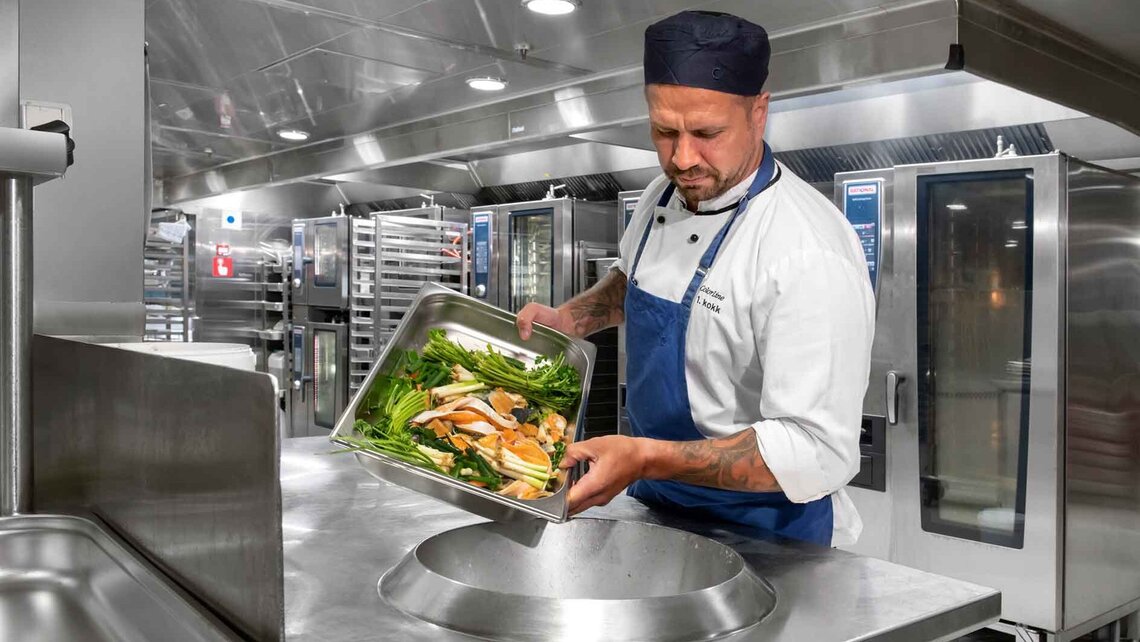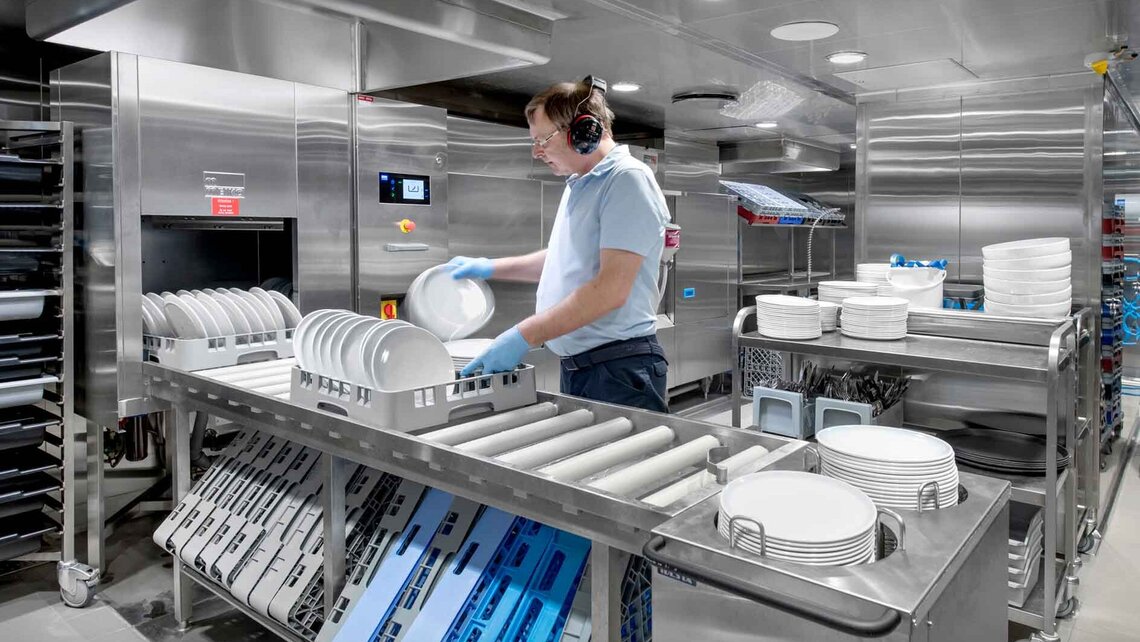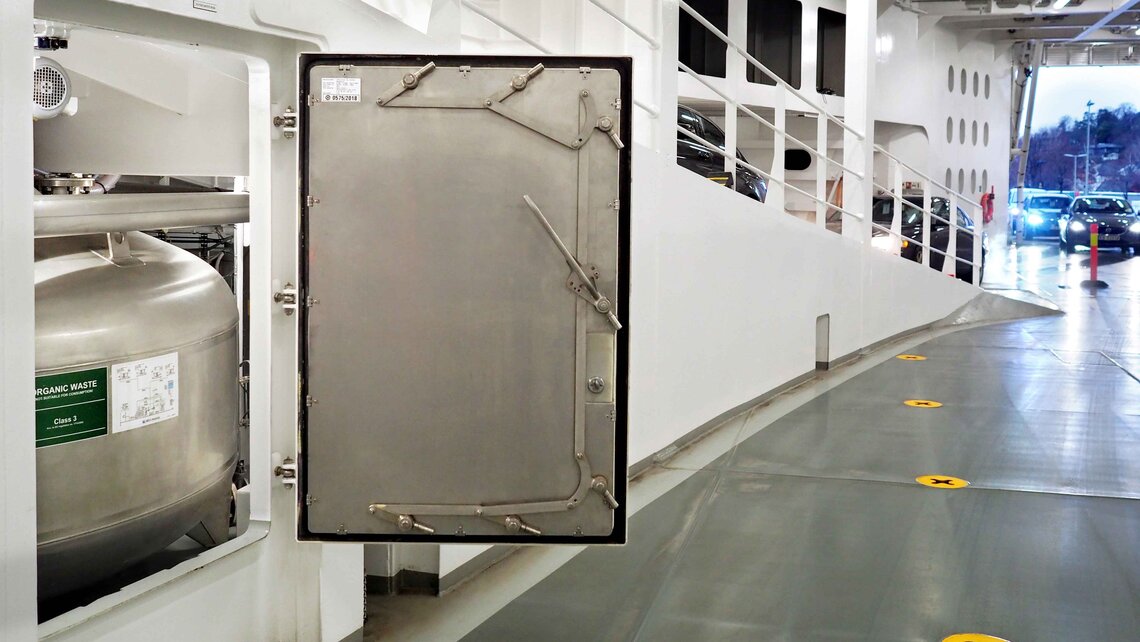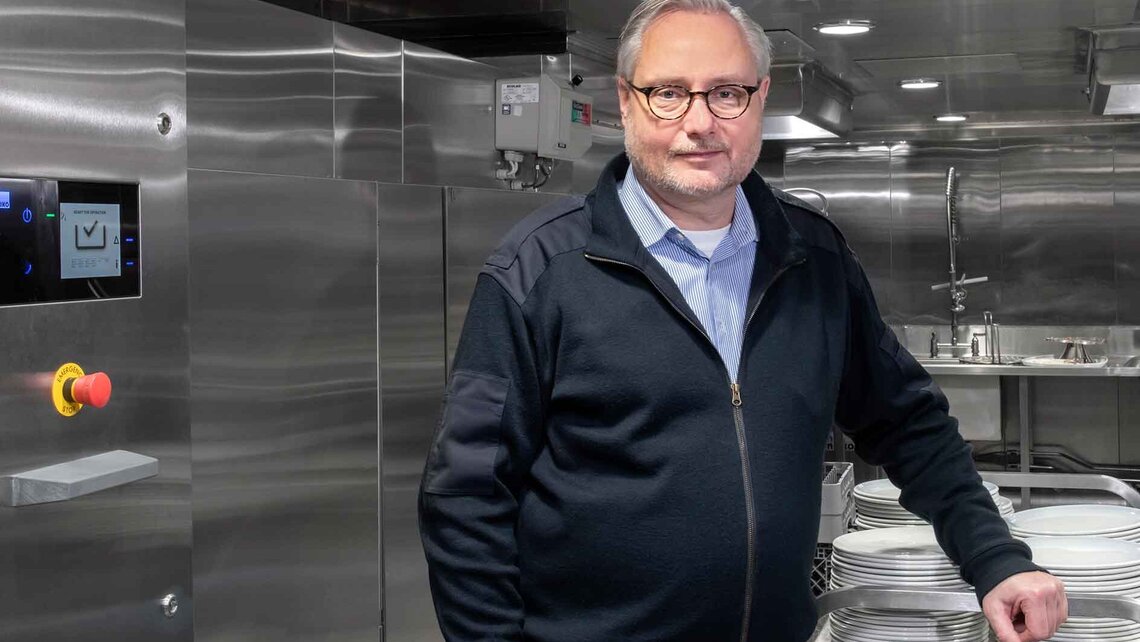Plug in: From fjord to fjord in the world's largest plug-in hybrid ship
It is cold and dark when the blue bow opens for the first time. The world's largest plug-in hybrid ship is still lying quietly on the pier in Norway's picturesque city of Sandefjord. Shadows fly across the outer wall of the Color Hybrid, and the first cars roll aboard. Captain Asbjørn Heide Larsen's crew has a long day ahead of them; and already a short night behind them. The mountain of food for the day has long been on board, directed by chef Morten Halseth. Like every night. Then it's cast off, Sweden awaits. The engines are silent, but the ship glides out of the harbour into the fjord. Quite normal aboard in the future. Jury chairman Gustav-Erik Blaalid spoke of a "new era in the passenger ferry segment" in 2019 when he named the Color Hybrid - under the eyes of the heir to the throne Prince Haakon - as "Ship of the Year". The seafaring nation should know.
160 metres long and 9 decks form the largest plug-in hybrid ship in the world. 11,000 volts of shore power rush through a massive plug into four battery banks at each stop. 65 tonnes of battery power deliver 5 megawatt hours! With this, the colossus glides through the fjords for 20 minutes. Completely emission-free and silent because the main engines are only started up on the high seas. Until then, everything runs on green electricity from hydropower, right down to the lighting, the lifts and the supermarket's refrigerated counters. Heating is also sustainable: a waste heat recovery system uses the engines' thermal for 24 hours. Even the kitchen herbs are thriving sustainably, braving the Nordic grey in the greenhouse on the main deck, spoiled by light and warmth. All this pushes the nitrogen oxide emissions down to zero, while CO₂ emissions are down by a third compared to ferries of this size. But this is by no means the end of the story.
A cruise for two and a half hours
There are only 60 kilometres between the idyllic Sandefjord and Strömstad in Sweden as the crow flies. But also the Skagerrak. To ensure smooth border and goods traffic between the Scandinavian neighbours, the Color Hybrid shuttles two and a half hours from fjord to fjord. Four times a day. Up to 2,000 people and 500 vehicles flock on board each time, in anticipation of a miniature cruise. This means that the desire for fresh buffets, food and goods never ceases, from morning till night. This is a mammoth logistical task, not to mention the pressure on the crew: 100 men and women live permanently on board for two weeks. Then the second crew takes over the helm for the next 14 days.
The passengers would have no idea. They enjoy the charming view, feast at the Koster Buffet, enjoy snacks with a sea view at Utsikten Bar & Lounge or chat at Spiseriet Café. Fashion lovers and bargain hunters will find duty free food, toys, clothing and electrical goods in an area of over 2,200m². Families are drawn to the outdoor playground and those who sense a lucky streak can visit the casino. Cruise and ferry are also merging in terms of technology. Ultimately, they both involve travelling across open seas. "In the event of an emergency, the "Safe Return to Port" directive also applies to us" explains Jürgen-Iver Sell. This is an international safety concept. The ship structure is redundant, which means the next port is reached even in the event of a leak. Real shipping.
Sell, Public Health Manager at Color Line, knows the floating efficiency miracle inside out. His job at Norway's largest shipping company revolves around hygiene safety, including food, drinking water and swimming pools. "There are hygiene hotspots are everywhere on board. That's why the WHO requires a Ship Sanitation Certificate," he explains in front of the - freshly disinfected - lift for the parking deck. The health authorities check this every six months. The Rhineland native trains the inspectors from the authorities in this regard and developed parts of the safety system for hygiene processes on the Color Hybrid.EU laws on shipping are therefore his daily bread - after all, he is responsible for the hygiene safety of around 4 million passengers in the fleet every year. In addition to sustainability, this is the be-all and end-all on board, and not just since the coronavirus: "The dishwashing area is a great example. It can be an epicentre, for example, in the transmission of noroviruses through the dishes. Everything goes out from here to thousands of people who then leave the ship," explains the trained chef, disinfector and key account manager for large kitchen machines. Thanks to his multi-faceted CV, he designed the dishwashing area himself without further ado - also as a cornerstone of the green concept on board.
Hygiene plus and fuel from orange peels
Leftovers from the buffet, bones, fish skin, fruit and vegetable peelings, seeds and and and. The so-called wet waste flies out of buckets, trays and off boards into large stainless steel chutes in the work surfaces. A vacuum builds up and pulls everything with it. The crushed mass shoots through the pipes below the decks into a steel tank in the belly of the ship. The loading chute is empty, ready for the next load. This is how it works bit by bit. Orders keep coming in and the lunch buffet is waiting. "Wet waste is also part of our green approach. The food arrives fresh on board at night and when passenger numbers fluctuate, we need to be flexible, but calculate very precisely so as not to waste anything. That's why we also weigh all the leftovers and itemise them before they are crushed and collected," explains Sell.
There are four such loading chutes on board. Their lines feed into a small room under the ramp to the upper parking deck. There is the 7 m³ storage tank. Tailor-made, because at sea millimetres are worth their weight in gold. "The system is closed, odourless and requires no cooling. Once or twice a week, a tanker truck sucks up the biomass from the parking deck, and that's it," adds the adopted Norwegian. Nearby, fuel is then produced from it again. Chef Halseth also points to hygiene: "We would have to transport all the leftovers across the ship. Instead, they fly into the infeed stations, press a button; that's all we have to do." The rest, or rather the leftovers, is taken care of by the system from German manufacturer MEIKO GREEN Waste Solutions. It takes on Scandinavian shells, coffee grounds and buckets of orange peel from the popular juicer. "All machines on board need to be reliable, durable and easy to operate. And robust! Often all it takes is a touch on the door of the equipment and you can feel the quality," says Sell, walking to the dishwashing area.
"There are no empty words behind the term reliability here, it is an absolute must"
Because of the heave of the sea, everything is welded tight. "You can't just change an engine, and if there's a breakdown on the high seas, no service staff will come" - Sell is standing in the windowless room next to the main galley on deck 7. Nothing works here without noise protection. Walls, floor, ceiling: stainless steel. Full racks of dishes run non-stop into a massive flight type dishwashing machine that dominates the room. And non-stop they roll out of the back clean again. There everything is sorted, stacked and goes back to the kitchen. The rate is sensational. On average, a passenger uses four plates and three glasses for water, cocktail or wine. Full capacity would therefore mean 32,000 plates a day. Plus cups and cutlery. "We avoid plastic where possible and also avoid single-use packaging. And if we absolutely have to use plastic, we stick to degradable plastic," explains Sell regarding the mountains of crockery pouring in. "We have a turnover like on a cruise. Imagine this machine breaking down on the high seas. With thousands of dishes and drinks, business would immediately come to a standstill. There is no plan B. There are no empty words behind the term reliability here, it is an absolute must - every day, even after years."
When the going gets tough, all spare parts are on board and the technicians are highly trained by the manufacturer. And the green concept? "We wash using fresh water, which is precious on the high seas. It is bunkered in Sandefjord and used extremely sparingly. Our dishes therefore need to be absolutely hygienically clean with as little water as possible - keyword noroviruses", says the hygiene manager. The workhorse M-iQ doses the necessary amount of water automatically, depending on the rack. This saves a lot of valuable water. The manufacturer MEIKO's logo also appears on the dishwashing technology - in the dishwashing area and in the on-board cafés. All from one provider. "The usable water is stored in grey and black water tanks, we don't dump anything into the sea," Sell concludes on the way to the Horisonten Lounge viewing room.
Outside, the fjord can already be seen again, hungry seagulls chasing a fishing boat. Then the main engines shut down. The batteries take over. Hardly anyone even notices. Sustainability can be this natural. The relaxed Nordic atmosphere on board becomes even clearer - obviously the trip flew by. Car ferry, shopping centre, temple of pleasure, beacon for sustainability: shipping and environmental awareness are no contradiction, that's for sure. Later that night, the bow hatch closes again. The new groceries are coming. Soon a new queue forms.



